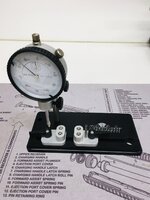Gold Supporter
Bronze Supporter
- Messages
- 12,922
- Reactions
- 47,166
This is part one released on Halloween. Pretty informative if you are considering one. It's a good overview of the mechanical aspects and later reloading performance compared to reloads he just did on another press. I like the line where he is removing the C clips and says "All I have are screwdrivers and bandaids".












